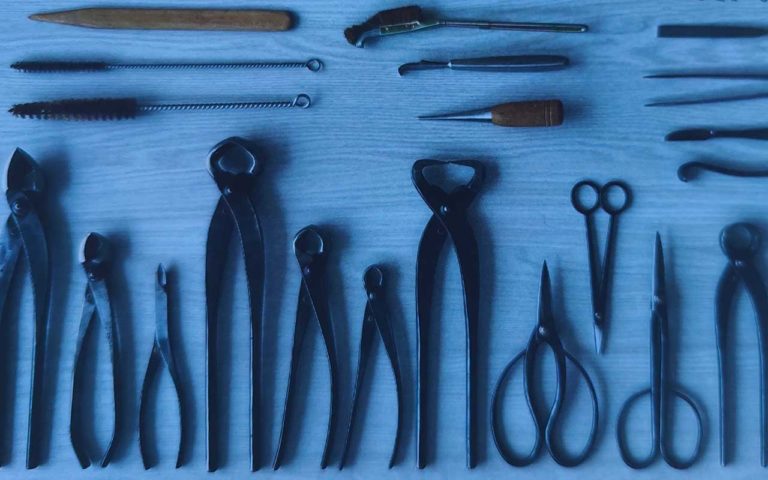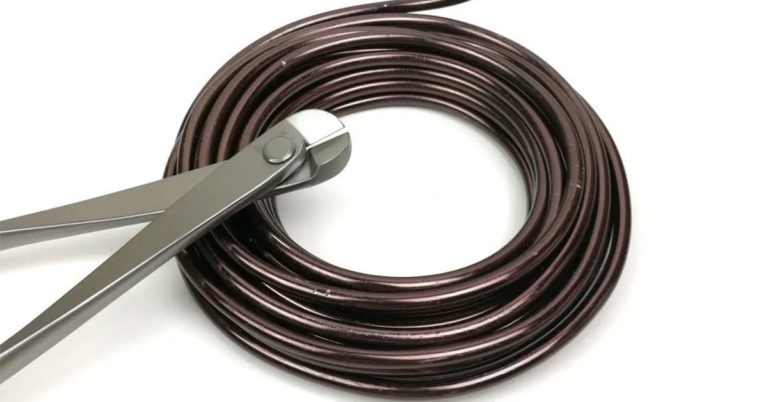Watering a bonsaï tree might seem simple. In reality, it’s one of the most complex tasks to master when it comes to the art of bonsaï…
Japanese masters dedicate many years to learn how to water their bonsaï trees properly.
Obviously, a bonsaï tree, as any vegetable, needs water to survive. Water is essential as it carries all the elements that the tree needs to grow.
Most of the time, a sick or improperly grown bonsaï is the result of poor watering practices, often due to overwatering. Same, a lack of water can lead to a quick death.
Let’s dive into one of the most delicate act when in comes to bonsaï care: watering.
See also
The Importance of Proper Watering for Bonsaï Health
Proper watering is crucial for the health and vitality of bonsaï trees. This is because bonsaï trees are grown in small containers, which can limit the amount of water that they receive compared to trees grown in the ground.
Watering bonsaï trees correctly helps to ensure that they receive the appropriate amount of moisture to thrive.
One important aspect of proper watering is consistency. Bonsaï trees should be watered regularly and consistently to prevent under or over-watering.
Under-watering can lead to dehydration, wilting, dieback, and eventually death possibly in less than 48 hours.
Over-watering can result in root rot and the growth of harmful fungi. While under-watering leads to death, overwatering on the other end results in longterm affections.
Another aspect of proper watering is the technique used. Bonsaï trees should be watered thoroughly, allowing water to soak the entire root system, without causing water to pool on the surface. This helps to encourage deep root growth, which is important for the overall health of the tree.
Additionally, the water used for bonsaï trees should be free from harmful chemicals, such as chlorine and fluoride, which can be harmful to delicate bonsaï roots. We’ll come back to this later in the article.
Factors to Consider When Watering a bonsaï
Watering a bonsaï is not only a question of when and how much water. There are many factors to take in account to determine the quantity and the frequency.
Climate, biotope and species
Where you grow your bonsaï is very important. Factors such as humidity, wind, drought, temperatures, and the number of sunny days in the year should be taken into account when it comes to watering.
You don’t water a bonsaï the same in Dallas the same you do it in Washington.
Same, some species don’t need as much water as others. A pine tree doesn’t need to be watered as often as a weeping willow.
The more a bonsaï has leaves, the more in release water through it, so the more it needs water.
Finally, a young tree needs more water than a mature one because it has less roots.
Wind and light exposure
A bonsaï tree placed in an area of your garden that’s exposed to the wind and abundant sunlight will demand more frequent watering.
The reason behind this heightened need for water lies in the environmental factors at play:
- Wind can accelerate the evaporation of moisture from the soil and the tree’s foliage, leading to a faster loss of water.
- The direct exposure to sunlight can increase the tree’s transpiration rate, where it releases water vapor through its leaves.
Importance of susbtrate composition for watering a bonsaï
The substrate composition or soil mix is of utmost importance when it comes to watering a bonsaï. Substrates that retain too much moisture can suffocate the roots and hinder the tree’s growth. On the other hand, substrates with high drainage capacity can dry out quickly, leading to dehydration.
Therefore, finding the right balance in substrate composition is essential. A mixture of organic and inorganic materials, such as peat moss, akadama, and perlite, can provide adequate drainage while retaining some moisture.
It is also important to consider the specific needs of different tree species when selecting the substrate composition.
What is Akadama? Akadama is a type of volcanic soil that is commonly used in bonsaï cultivation. It is derived from the volcanic ash of Mount Akadake in Japan and is known for its excellent drainage and water retention properties.
Akadama is particularly well-suited for bonsaï because it provides a stable environment for the roots, allowing them to receive sufficient oxygen and moisture. This soil type is also often mixed with other organic materials, such as pumice and lava rock, to enhance its overall effectiveness for bonsaï growth.
Pot size and shape
The pot plays a crucial role in the watering process of a bonsaï tree. Its shape and material can greatly affect the way water is absorbed, retained, and drained.
Firstly, the shape of the pot is important for the root health and growth of the bonsaï. Ideally, the pot should be shallow and wide, allowing for proper air circulation and oxygen penetration to the roots.
A shallow pot also prevents over-watering, as it does not hold excess water that could drown the roots.
Additionally, the material of the pot is significant. Bonsaï pots are typically made of clay or ceramic. These materials help in regulating moisture levels as they are porous, allowing excess water to evaporate slowly. This prevents waterlogging and provides a favorable environment for the roots.
Furthermore, the size of the pot is a crucial consideration when watering. A pot that is too large may require excessive watering, leading to water retention and potential root rot. On the other hand, a pot that is too small may dry out quickly, leaving the roots deprived of water.
Finally, pots with vertical or sloping walls drain water more quickly. Keep that in mind when buying the perfect pot.
When to water a bonsai? How often?
The key idea is to observe your bonsai and its pot to determine wether you bonsai needs to be watered or not. It’s time to water your bonsaï when you see that the substrate becomes dry. Easy, isn’t it?
You can even wait a bit so the substrate can breathe. Whatever happens, don’t water your bonsaï as long as the soil is still humid. How do you know that? Its color remains dark. If you can’t tell, better to water than not.
You can check the dryness of the substrate on a daily basis, even more often during a drought episod. You don’t need to water a bonsai as long as the soil is humid, but never wait for the soil to dry out completely.
Water your bonsaï in the morning because the water has time to warm up and is better absorbed. In the afternoon, the water vapors faster.
What type of water should you use to water a bonsai?
- Tap water: In most cases, tap water is suitable for watering bonsai trees. However, the quality of tap water can vary depending on your location. If your tap water is heavily chlorinated or contains high levels of minerals, you may want to consider alternative water sources.
- Filtered or distilled water: Using filtered or distilled water can help remove impurities and minerals that may be present in tap water. This can be beneficial for bonsai trees, especially if your tap water quality is poor.
- Rainwater: Collecting rainwater and using it to water your bonsai can be a good option, as it is naturally free of chemicals and minerals. However, be mindful of the quality of the air in your area, as pollution can affect the cleanliness of rainwater.
The correct method for watering a bonsai
Water your bonsai tree thoroughly or do not water it at all! Always water enough, never water a little!
Watering your bonsai tree thoroughly or not at all is the key to maintaining its health and promoting proper growth. It is crucial to avoid watering your bonsai tree in small increments as this can lead to the roots being constantly damp and susceptible to rot.
When watering, it is essential to thoroughly saturate the soil until water begins to drain out of the drainage holes at the bottom of the pot. This ensures that the entire root system receives adequate moisture.
You should always water a bonsaï from above: the water will push the oxgen down to the roots thanks gravity. Use a fine-flow watering can to imitate rain.
Water should be done on the top of the soil until the root ball is evenly soaked and water flows abundantly through the drainage holes.
Don’t water your bonsaï from below: Watering your bonsai from below can cause several problems.
Firstly, it can lead to the uneven distribution of water in the soil, as water tends to move downwards rather than spread evenly throughout the root system. This can result in dry patches and overwatered areas in the soil, which can be detrimental to the health of the bonsai.
Additionally, watering from below can create a stagnant environment at the bottom of the pot. This stagnant water can lead to the buildup of harmful bacteria, fungi, and other pathogens, which can cause root rot and other diseases in the bonsai.
Furthermore, watering from below makes it difficult to gauge the moisture levels of the soil accurately. By watering from the top, you can observe the water flowing through the soil and ensure that it reaches all parts of the root system. This allows you to water more effectively and avoid underwatering or overwatering your bonsai.
In case of heazcy rain, incline the bonsaï with a block to drain the excess of water.
I don’t recommend the use of automatic watering systems as it doesn’t match the real time needs of the bonsaï.
Conclusion
That’s a wrap, watering a bonsai properly is of upmost importance when it comes to its health and survival. Don’t play around with the water, observe your tree, water it when needed. That’s it.


